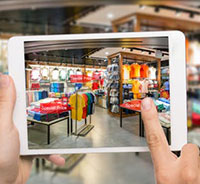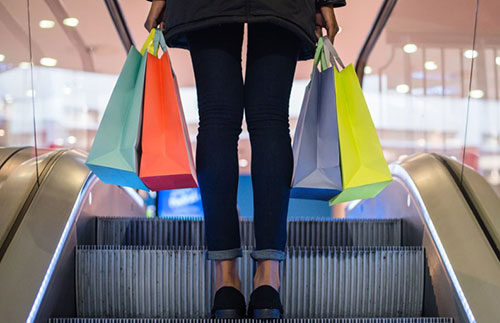"Marked by an unrelenting and disruptive consumer revolution, the past decade made mobility a make-or-break factor for fashion retail businesses. Factors responsible for this change included demographic shifts, rise of the smartphone, the ubiquity of the internet, the changing role of stores and competition from unexpected rivals."
 Marked by an unrelenting and disruptive consumer revolution, the past decade made mobility a make-or-break factor for fashion retail businesses. Factors responsible for this change included demographic shifts, rise of the smartphone, the ubiquity of the internet, the changing role of stores and competition from unexpected rivals.
Marked by an unrelenting and disruptive consumer revolution, the past decade made mobility a make-or-break factor for fashion retail businesses. Factors responsible for this change included demographic shifts, rise of the smartphone, the ubiquity of the internet, the changing role of stores and competition from unexpected rivals.
Reevaluating the fundamentals of their businesses, retailers noticed certain factors like a transition from a linear to circular economy, globalisation of supply chains, explosion of cities and the need for sustainable energy testing the trust of their customers. As a recent Lifestyle Monitor survey revealed, though the expenditure of customers on apparels increased significantly in last 10 years, their mode of shopping changed. While in 2009, around 32 per cent consumers spent most of their money on shopping from brick and mortar stores. By, 2019, this figure dropped to 24 per cent with around 43 per cent consumers preferring to shop online.
Informed consumers lead to change in retail models
The decade also brought about the democratisation of information and an informed consumer class. The concept of a retailer or a company promoting an idea to shift the paradigm became harder to execute as consumers were already aware of what they wanted to buy. They also have access to all materials that industry insiders use as runway shows are live streamed and look books are posted the moment they drop.
of a retailer or a company promoting an idea to shift the paradigm became harder to execute as consumers were already aware of what they wanted to buy. They also have access to all materials that industry insiders use as runway shows are live streamed and look books are posted the moment they drop.
An easy access to the internet also gives consumers innovative ideas to buy clothes online. As the Monitor™ survey revealed, last year around 38 per cent consumers got their clothing ideas online. On the other hand, the influence of store displays and windows decreased from 42 to 33 per cent. To meet changing needs, retailers started investing in mobility for top-down changes to their business models. They are delivering streamlined, personalised paths to purchase.
Digital disruption leading to store closures
A study commissioned by SAP in January 2019 assessed the adoption of intelligent technologies to support the digital transformation journey in the last decade. The research examined companies who were actively undergoing digital transformation and had already implemented at least two innovation technologies. The study revealed that digital disruption has taken a toll on the retail industry with thousands of store closures affecting everyone from mass merchants to luxury stores.
Although thousands of retail doors closed, many new stores opened, including previous online-only brands like Bonobos and Indochino. But another reality for the fashion industry is consumers aren’t purchasing as much as they used to. Their interest in quality has increased with around 51 per cent willing to pay more for better quality garments, a measurable increase from 47 per cent a decade ago, reveals the Monitor™ research.
Growing preference for cotton apparels
The preference for cotton apparel remained strong with nearly 79 per cent consumers preferring clothes made of cotton as against 3 per cent preferring silk and polyester each. Over 76 per cent consumers believe cotton garments to be of better quality compared to 49 per cent a decade ago. They prefer to shop from brands like Patagonia and Noah that have a point of view and ethos that squares with their own, as opposed to the label with the cheapest price.
Brands like Badgley Mischka, Levi’s, Adidas and Tapestry, who adopted SAP, have been able to make it through some of the retail’s roughest waters as they realised the value of intelligent digital transformation, enhanced mobility functionalities and an elevated customer experience.
In future, consumers will expect retailers to be more involved in their lives as trusted partners. To deliver on these expectations, retailers will need to earn their customer’s trust by embracing new technologies and being more creative about the services that they provide.












